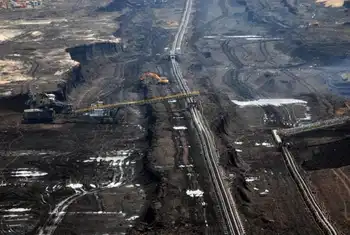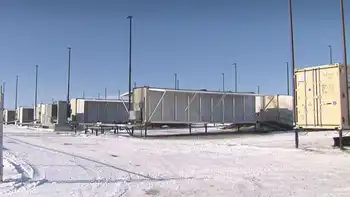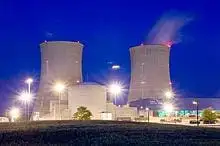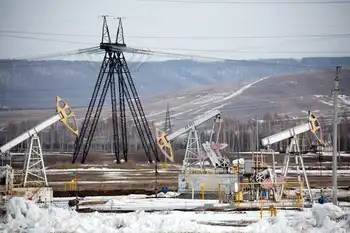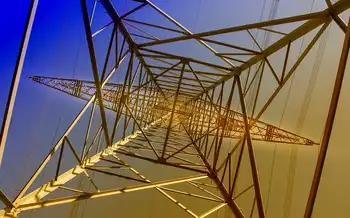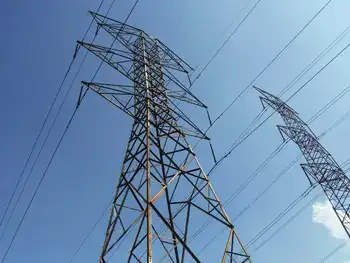Tribes see profit in harnessing the wind for power
By New York Times
High Voltage Maintenance Training Online
Our customized live online or in‑person group training can be delivered to your staff at your location.

- Live Online
- 12 hours Instructor-led
- Group Training Available
Native American tribes like the Rosebud Sioux now seek to claim that inheritance. If they succeed in building turbine farms to harness some of the countryÂ’s strongest and most reliable winds, tribal officials like Ken Haukaas believe, they could create a new economic underpinning for the 29,000 tribal members whose per capita annual income is about $7,700, less than a third the national average.
“We’re broke here,” Mr. Haukaas said. “We’re poor.” But, he added: “The wind is free. There’s energy here all the time.”
Mr. Haukaas believes that “the same thing that brought the buffalo brings the wind.”
“The buffalo were a gift,” he continued. “The wind is a gift.”
In 2003, after erecting a 750-kilowatt turbine that powers the Rosebud Casino near the Nebraska border, the Rosebud Sioux tribal council set its sights on building the Owl Feather War Bonnet wind farm, a 30-megawatt project that could power about 12,000 homes, each about 1,200 square feet.
After five years of negotiations with a non-Indian developer, Distributed Generation Systems Inc. of Colorado, the tribal council president, Rodney M. Bordeaux, said that he expected to sign a construction deal that would bring in some $5 million to the tribe over 20 years. The total is about $1.7 million less than the developerÂ’s original offer because of an acrimonious last-minute dispute with the tribe.
The idea of hitching tribal fortunes to the wind has gained momentum with the growth of the wind industry, which is expanding so fast that turbines are in short supply worldwide.
Half the states now require utilities to add renewable energy to their portfolios. The oilman T. Boone Pickens is proselytizing about the value of wind, and thousands of turbines have sprouted on the Texas plains.
If Native Americans can get into the business, some federal officials say, the hope is that wind, like casino gaming, could reshape their economies.
“It could be huge,” said Lizana Pierce, the project manager with the tribal energy program at the Department of Energy.
Here in the wind-rich Indian country, turbines are few, and deals to build them often do not come easily. Unpredictable cultural boundaries sometimes separate Indian tribal leaders, who have access to the wind, and non-Indian business executives, who raise the money to buy and install turbines, make deals to transmit the electricity to market and find buyers for it.
With just one significant wind farm operating on Indian land — a 50-megawatt project on the Campo reservation near San Diego — the Energy Department has been hoping for another to prove to wind developers that successful projects are possible.
Sandra Begay-Campbell, the principal member of the technical staff at the department’s Sandia National Laboratories in New Mexico, said, “People have been waiting for something to happen so you can point to the success and say, ‘Look at this model.’”
Other projects are in the offing; the Lower Brule Sioux tribe, to the northeast of Rosebud, recently struck a deal with Iberdrola Renewables, a subsidiary of the Spanish utility Iberdrola S.A., to build a 225-megawatt wind farm.
But only the Rosebud Sioux, Ms. Begay-Campbell said, “are poised and ready to move toward the actual development and hardware.”
The Energy Department has invested nearly $450,000 in the development of the Owl Feather War Bonnet wind farm, to be built on 50 acres in the western part of the Rosebud reservation. The department also recommended Distributed Generation Systems and its president, Dale Osborn, a seasoned hand in the wind-energy industry who has built small-scale projects in Colorado, Spain and China.
But it took the federal Bureau of Indian Affairs 18 months to sign off on the original deal, approved by the tribal council in 2006, under which the tribe would receive $280,000 in royalties the first year of the wind farmÂ’s operation. The amount would have grown each year, with the 20-year total topping $7 million.
Mr. Haukaas, who is the tribe’s project manager, said that from a landowner’s standpoint, the offer was the most lucrative he could find. “This is a $58.6 million project,” he told the tribal council. “We do not put up a dime. All we put up is the land.”
During those 18 months, a tribal election was held, and the new council objected to the terms of the deal.
After tribal tax authorities recently decided that tribal sovereignty was at risk if a $1.17 million employment tax, the maximum possible, was not paid up front, Mr. Osborn complained bitterly to the tribe and to the reservationÂ’s Congressional overseers.
“I am frustrated beyond belief,” Mr. Osborn said in a recent interview, adding that his deal with investors cannot bear the weight of the unexpected upfront costs unless royalty payments are lowered.
But some of the councilÂ’s 20 members were suspicious of Mr. Osborn and angry at his outbursts about the tax.
“The people for these companies come and wave a couple of dollars in front of us, and we fall for it,” a council member, Leonard Wright, said at a meeting on October 2.
Another member, Robert D. Moore, said of Mr. Osborn: “He questions our mentality. I question his.”
A few years ago, a hog-farm company received an easement from the Rosebud Sioux in return for a percentage of net profits — then showed little or no profit. Mr. Bordeaux, the tribal council president, said he had taken care to make certain that whoever developed the wind farm did not “take advantage of us like the hog farm did.”
Mr. Osborn emphasized that the tribeÂ’s royalty share would be taken from revenues, not profits. He sent back to the tribe a revised deal that reduced the total payout over 20 years by $1.7 million, to a little more than $5 million, to accommodate the upfront tax payment.
Despite the rancorous back and forth, Mr. Bordeaux said that he would sign off on the new arrangement. “The main idea is we got that initiative going,” he said. “We can become a major player in wind in South Dakota.”
Patricia Nelson Limerick, a history professor who is board chairwoman of the Center of the American West, at the University of Colorado, pointed to the “several hundred years of mistrust between white folks and Indians” in discussing the “tangled” process that led to the Rosebud Sioux’s wind deal. “If you average out the zigzags,” Dr. Limerick said, “it’s moving in the right direction.”
Mr. Osborn was less sanguine. “Doing business on a reservation,” he said, “is more difficult than doing business in China.”





